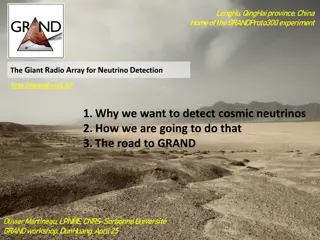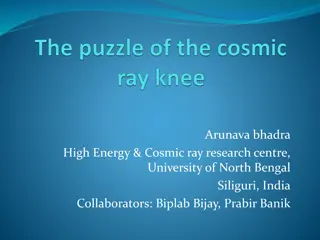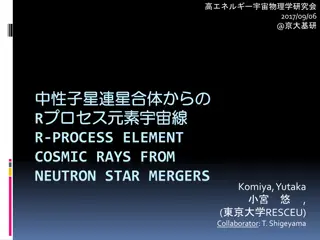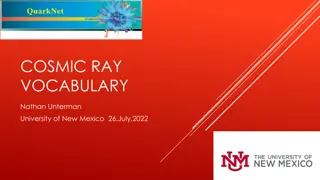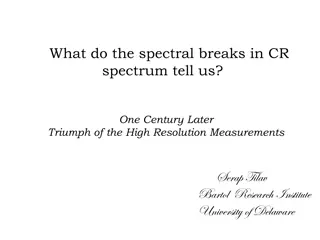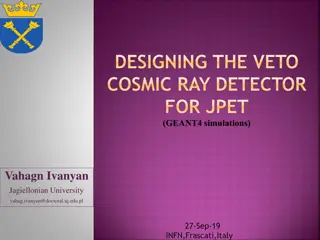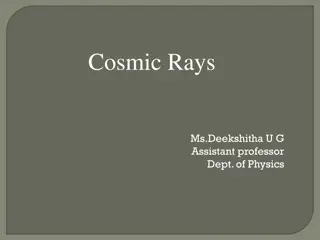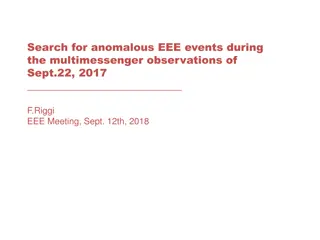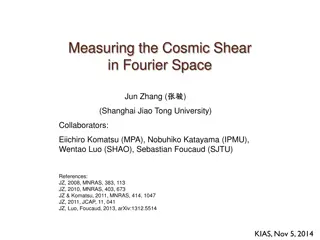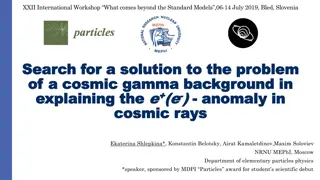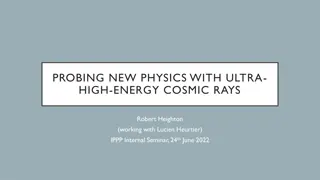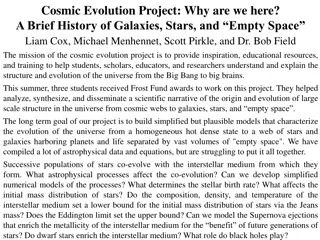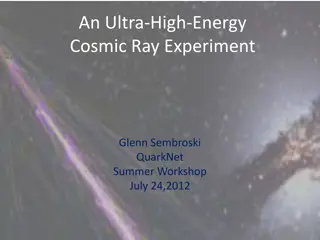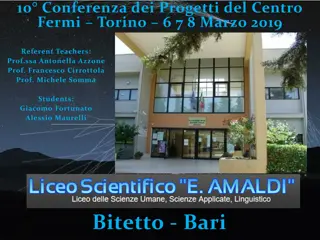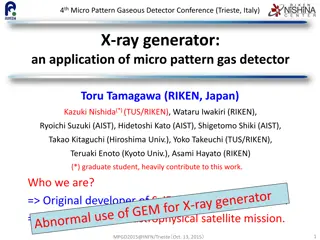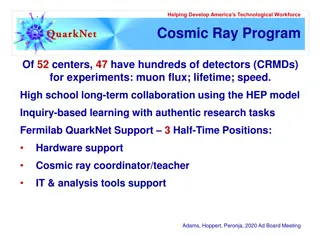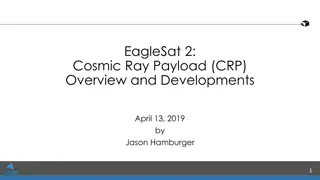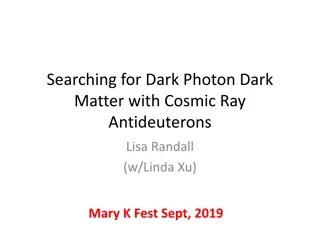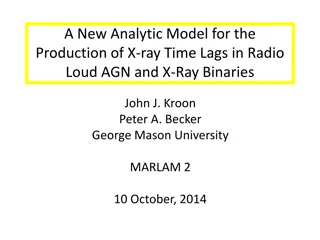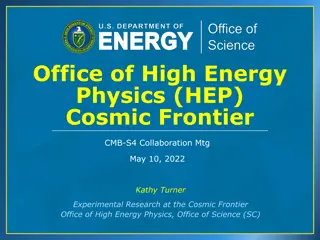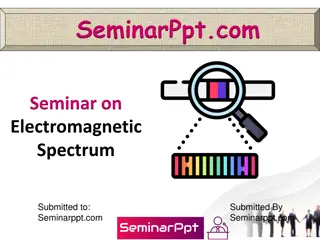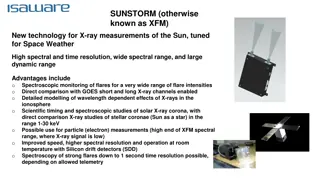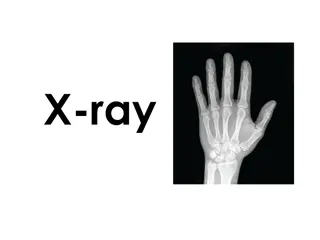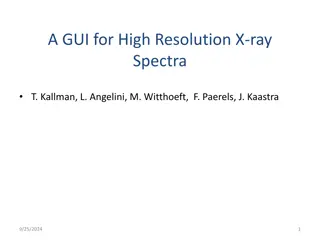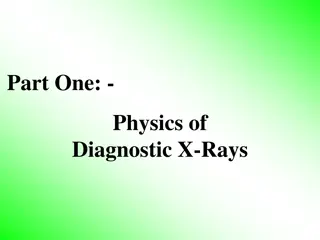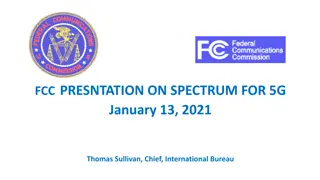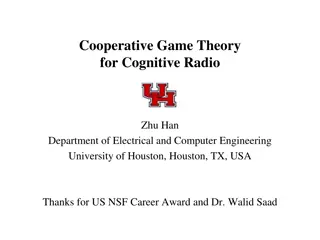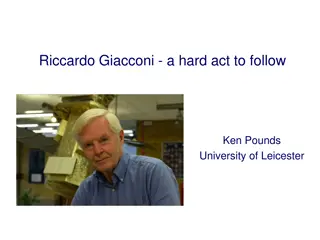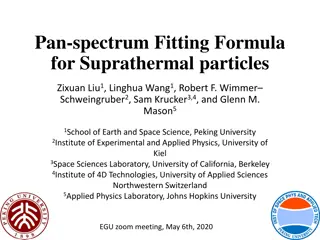Insights into Cosmic Ray Spectrum and Coincidences Study
In-depth exploration of cosmic ray spectrum and coincidences study conducted by F. Coccetti, M. Garbini, F. Noferini, focusing on energy spectrum analysis of primary cosmic rays. The study involves simulations using Corsika, new tools like Coincidences DQM, and adjustments in parameter configurations for Corsika showers. The research aims to enhance understanding through detailed simulations and multi-track selection to improve sensitivity in assessing Extensive Air Showers (EAS).
Download Presentation

Please find below an Image/Link to download the presentation.
The content on the website is provided AS IS for your information and personal use only. It may not be sold, licensed, or shared on other websites without obtaining consent from the author. Download presentation by click this link. If you encounter any issues during the download, it is possible that the publisher has removed the file from their server.
E N D
Presentation Transcript
Search for coincidences and study of cosmic rays spectrum F. Coccetti, M. Garbini, F. Noferini
Outline Previous update available here: http://agenda.centrofermi.it/indico/event/33/ The goal and open points Recent developments The roadmap 2
Goal add EEE points on the energy spectrum of primary CRs <E> 2.5 1015eV What we got so far Preliminary simulations (Corsika) show EAS energies have a very small dependence on the distance between two telescopes We need new Corsika sims We need more detailed simulations (including material effects) We probably can improve multi-track selection (new clock card time can be used to build tracks) Multitrack events may be more sensitive to the EAS energy 3
eee.centrofermi.it/monitor/coincidences.html New tool: Coincidences DQM 4
Simulation: Corsika showers We need to build a new sample of Corsika shower. This because we adjusted some parameters in the configuration file in particular we decided to remove the weighting factor which increases the production for vertical cosmic rays (usually implemented for plane detectors) now we are simulating isotropic primaries. We added more cores (8+4) and we planned to increase up to 16 and hopefully more (we open a ticket with a request of more resources). We started from 104 GeV showers and we are increasing the energy of the primary. 5
Status of simulations Dir Energy range (GeV) N showers planned status Size 1x103 1x104 TO BE DONE TO BE DONE 1x104 2x104 4e1 1000 945 0.50 GB 2x104 3x104 4e2 1000 DONE 0.57 GB 3x104 4x104 4e3 1000 813 0.51 GB 4x104 5x104 4e4 1000 DONE 0.67 GB 5x104 6x104 4e5 1000 DONE 0.71 GB 6x104 7x104 4e6 1000 826 (ongoing) 7x104 8x104 4e7 1000 514 (ongoing) 8x104 9x104 4e8 1000 TO BE DONE 9x104 1x105 4e9 1000 TO BE DONE 1x105 2x105 5e1 1000 DONE 1.2 GB 2x105 3x105 5e2 1000 DONE 1.7 GB 3x105 4x105 5e3 1000 DONE 2.2 GB 4x105 5x105 5e4 1000 DONE 3.4 GB 5x105 6x105 5e5 500 DONE 1.7 GB 6x105 7x105 5e6 500 DONE 2.1 GB 7x105 TO BE DONE TO BE DONE 6
Structure of the simulation Event generator available: Corsika Isotropic muon generator (i.e. used to compute detector acceptance) We generate events accordingly to a known flux We keep events with at least one muon in one detector We propagate events using geant4 and EEE telescope geometry (see MC group presentation) We reconstruct DST as for data 7
Multitrack events (data) Currently we are able to reconstruct multitrack events up to 10 tracks in a single event. Are they really particles or noise may mimic such an effect? We need a comparison with MC (available soon) We can use timing to see if clusters associated to the track are consistent also in time (to be verified) 8
The roadmap Priority is to provide full simulation to identify the best quantities (and templates) to characterize the EAS energy Old code was adapted to be able to include full Geant4 propagation (see MC group presentation) Generation of Corsika showers sample is running at CNAF Time to have the showers by the end of the month (nov 17) Time to have the input for Geant4 propagation to be calculated Time to have the output from Geant4 propagation to be calculated Once we will be able to reproduce the main features of data we need to define the strategy for the measurement/paper 9


